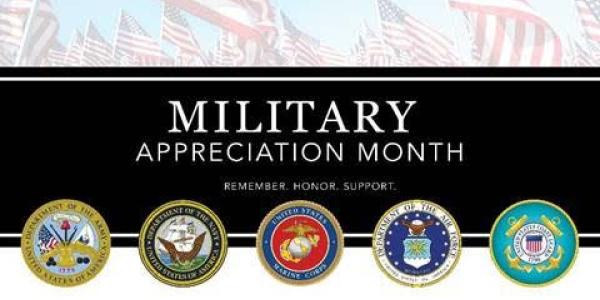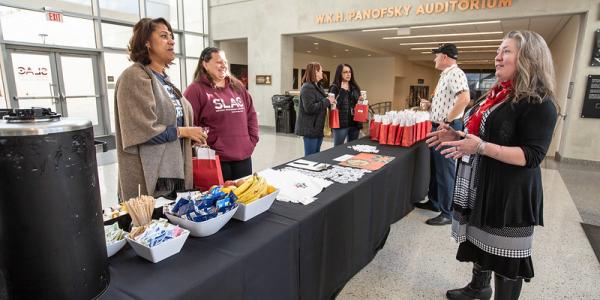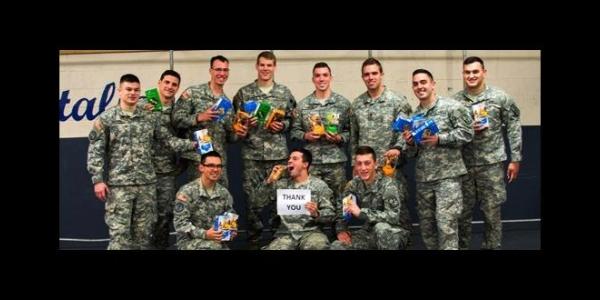Vets2STEM Technology Expo: Event recap
SLAC employee and U.S. Navy veteran Oscar Wiygul, who joined the lab as a cryogenics technical operator for LCLS-II, attended the Vets2STEM Technology Expo hosted by the Colorado School of Mines (referred to as “Mines”) on Nov. 7 & 8. Also attending from SLAC were Deputy Lab Director for Operations and Chief Operating Officer Brian Sherin, and Program Manager Enrique Cuellar.
Below is Oscar’s after action report of the event.
Reception (Thursday, Nov. 7)
17:00 – 19:00
Chance for lab and university representatives to meet and network. People from Idaho National Laboratory (INL), SLAC National Accelerator Laboratory (SLAC), Mines, Lawrence Berkeley National Laboratory (“Berkeley”), Lawrence Livermore National Laboratory (“Livermore”), Sandia National Laboratory (“Sandia”), and others were present. Short words of accolades and gratitude were shared by the Mines hosts.
Conference (Friday, Nov. 8)
Agenda:
- 8:00–9:00: Registration/networking breakfast
- 9:00–9:30: Opening ceremony: Stefanie Tompkins
- 9:30–10:30: Veterans-to-veterans panel
- 10:30–10:45: Morning break and booth exhibits
- 10:45–12:00: Career and academic track activities upstairs
- 12:00–13:00: Lunch/keynote speech: Bill Fehrenbach
- 13:00–13:30: Closing ceremony
- 13:30: Laboratory representative and veteran networking
Uniformed air force Reserve Officers’ Training Corps (ROTC) cadets acted as guides outside the auditorium. After registration, commemorative t-shirts were issued and attendees ushered down to the lower auditorium level. Community colleges had booths on the main floor, the lower auditorium had continental breakfast served and round tables for attendees to sit and network. The national labs in attendance had booths set up in an adjacent area.
After the colors were presented by the Mines Color Guard, the meeting was kicked off by the Mines Assist. Director of Research and Technology Transfer Stefanie Tompkins. She thanked those in attendance and the organizers for this inaugural Vets2STEM event. She spoke about the inspiration and objective of the conference and made a strong case for the veterans in attendance to approach the national lab representatives and seek opportunities for internships and employment. She then introduced Beth McCormick from Livermore, who gave a brief recognition of the others involved in the organization and logistics of the event and introduced Shaun, a Marine Corps veteran who hosted the veterans discussion panel.
Key takeaways from veterans discussion panel:
- Translating Military Occupational Specialty (MOS)/rating, work responsibilities, and leadership/soft skills experience into civilian resume is a challenge.
- Networking with other veterans is key to establishing pathways to careers in laboratories.
- Mission/unifying objectives and organizational structure is key similarity from military to labs.
- Veteran experience can play key factor in all aspects of lab’s work: logistics, planning/management, trades/tech, engineering, and research.
- Mileage varies between various vets’ experiences transitioning from military to civilian: Main factor seems to be the amount of forethought and planning that went into getting out of military – i.e. medical, administrative exits versus retirement or regular discharge.
- KEY: Find veteran advocate at organization to speak on your behalf and translate your military experience into the career opportunities you wish to pursue.
After the vets discussion panel, there was a break and then the upstairs area of the auditorium held activities for two tracks: career and academic. In the “Metals Hall” there was a panel where the national lab executives discussed their labs’ mission and opportunities for employment/internships. The lobby had booths with representatives from Colorado Community College and university programs supporting energy and defense.
A buffet lunch was served and the group reconvened in the downstairs auditorium to hear the keynote speech from Bill Fehrenbach. After the speech, colors were retired by the ROTC Color Guard.
Key takeaways from keynote speech:
- Veterans are more likely to stay in their first job out of the military, especially if they feel valued and supported. Also out of a sense of loyalty and dedication to the mission.
- Veterans are more likely to be promoted quicker than their civilian counterparts.
- About six million vets are unemployed or underemployed in the U.S. currently.
- Networking is essential to finding the right work/culture fit.
- Getting involved with organizations such as the university’s veterans group, Toastmasters, or other opportunities for leadership and networking helped Bill grow professionally and find the right career.
A booth session followed. Sandia had VR headsets with a virtual tour of their facilities that the participants could interact with. There were also some interesting tchotchkes that the other labs were giving out, such as “scientist” stress balls from Sandia, multi-dongle mobile device adapters and playing cards from INL, and beanies from Livermore. SLAC stood out because we were giving out challenge coins, a military tradition, to participants who gave us their resume. People remarked at how cool they thought it was.
Overall, the event was a resounding success, although it could have been more widely attended. The execution of the day’s activities went flawlessly and the feedback from many of the attendees was one of sincere gratitude and interest in working with the national labs.
By shirin@slac.st…



